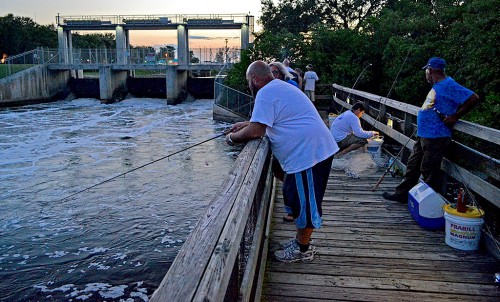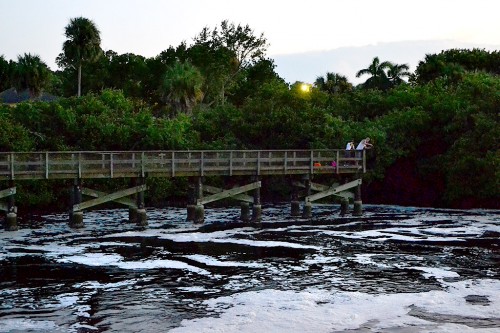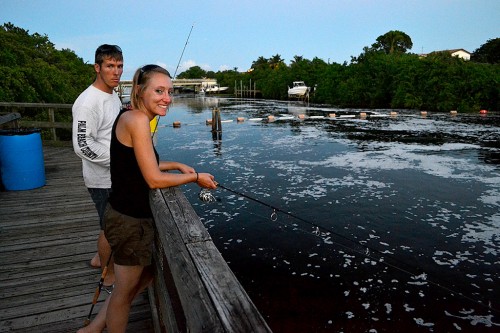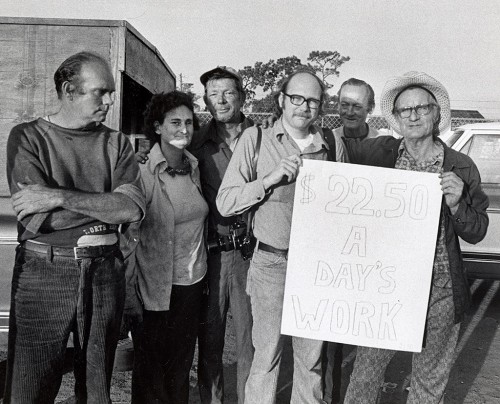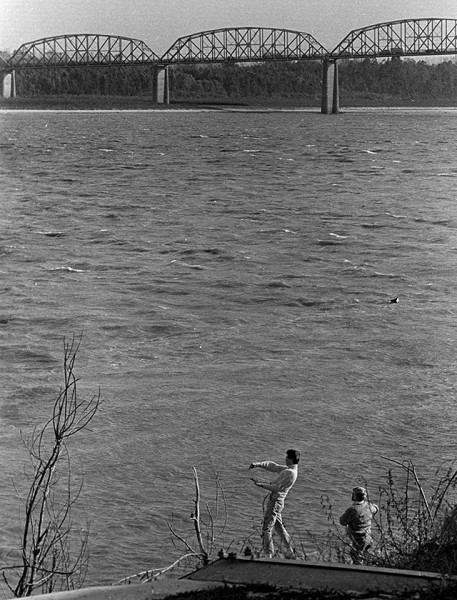I went on a bike ride last night. It’s been a long time since I’ve been on two wheels, so my legs were mush. About two-thirds of the way home, my calves started talking to me. “If you don’t stop what you’re doing, we’re going to give you a hurtin.”(Click on any photo to make it larger.)
Water spotted with foam
I listened to my calves and strolled out to the boardwalk that runs along the C51 canal between Lake Worth and West Palm Beach. It drains a substantial portion of southeast Florida between Lake Okeechobee and the ocean, including the water that has had my kid’s house an island west of town.
Not catching much
I didn’t see much activity of a catching variety going on. This couple said a guy closer to the spillway hauled in a good-sized bass, but they hadn’t caught anything yet.

